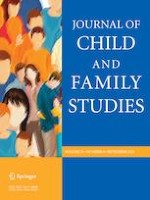12-05-2022 | Original Paper
The Relationship Between Parent-Adolescent Conflict Dynamics and Adolescent Depression
Gepubliceerd in: Journal of Child and Family Studies | Uitgave 9/2022
Log in om toegang te krijgenAbstract
This study investigated the relation between parent–adolescent conflict and adolescents’ depressive symptoms from a dynamic systems framework. Two aspects of conflict were examined: the intensity of conflict and the predictability of dyadic conflict (i.e., the extent to which parents and adolescents follow a predictable pattern in their conflict behaviors) during parent–adolescent interactions. Using a clinical sample of 26 adolescents with depression diagnoses and their parents, we conducted a state space grid analysis to capture the predictability of changes in observer-coded dyadic conflict during a conflict negotiation task. The intensity of conflict was measured using the total observed conflict score and adolescents’ and parents’ self-reports on their conflict behaviors post-discussion. A regression analysis was conducted to examine the moderation effect of the predictability of dyadic conflict on the relationship between the intensity of conflict and adolescents’ depressive symptoms. Results showed that the moderation effect was significant, such that adolescents’ and parents’ conflict behaviors were positively associated with depressive symptoms when parent–adolescent conflict dynamics were more organized and predictable. Findings suggest the importance of understanding the dynamic and dyadic patterns of parent–adolescent interaction when examining the relationship between family processes and adolescent depression.
